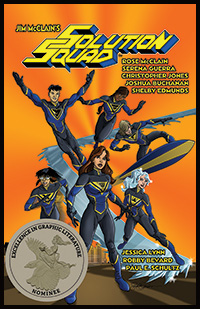In Mr. Neahr’s math class, I was challenged for the first time in my academic life. He piled on homework, which I spent hours on at home, pretty much because I had nothing else to do. The thing about Mr. Neahr’s instructional style was that he approached things very much as colleges did. He always addressed students by last name, occasionally using titles. He used titles every time if he didn’t like you. I was usually just “McClain.” My friends thought he was too strict, but my life experience had shown me that they didn’t know what strict was.
I liked being challenged. I still remember one time in his class being told that one cubic inch was 16.387064 cubic centimeters, and that a student had told him, years after he had left Mesick, that the one thing he remembered from the math class was 16.387064. I was determined to be like that student, so I memorized the number. I still have it memorized. Memorization, as it turned out, was a powerful tool in education, especially in 1977.
At one point in math class, I had the advantage of owning a handheld calculator, the Novus 650 Mathbox. That was uncommon back then for 7th graders. I had received the calculator for Christmas in 1975, and yes, I had asked for it. My mom had a calculator, and I enjoyed playing with it, to see what I could make it do. This particular model cost $17 in 1975, which is over $91 in today’s money. This was my only Christmas gift that year! This six-digit wonder had a fixed decimal and used Reverse Polish Notation. That means you would input your first number, press the ENT+ button, input your second number, and then press the operator button that you wanted to do to the pair. So, let’s say you wanted to subtract 18 – 6. You would input 18, press ENT+, input 6, then press the – button. I had to spend a lot of time figuring out what I could and couldn’t do with it.

I would often use the calculator to check my work, but when we were doing fractional work, I had to learn how to recognize common fractions when the decimals would appear on the screen. At one point, I made a hand-written list of common decimal equivalents, and did the long division by hand. When I did this, I discovered something interesting about the sevenths. One-seventh was 0.142857… (repeating). Two-sevenths was 0.285714…(repeating). Three-sevenths was 0.428571…(repeating). At that point, I saw the pattern. The same six digits repeated, in order, every time. They just started at a different place in the sequence! I couldn’t wait to show Mr. Neahr my discovery. He was impressed, but my classmates less so. I was being singled out as a “nerd,” that hip insult from Happy Days. I kept my discoveries quiet after that, and went back to being a clown.
I still spent hours on my homework, though. When we started doing a bit of geometry, we had to name all the segments in a standard cube.

I listed all the ones I could see, like AB, BF, FE, EA, and so forth, but I remembered Mr. Neahr saying that through any two points there was exactly one line. So, I erased my work and started naming them systematically. If there was a point A, there would be a line (and subsequently a segment) through A and every other point on the cube. So, I listed AB, AC, AD, AE, AF, AG, and AH. Then I did BC (BA was the same as AB), BD, BE, BF, BG, and BH. I repeated this process until my paper was full of pairs. And that was just one problem. Then I remembered how little my classmates appreciated me showing off, and I crumpled up that paper and started it all over again, only listing the visible segments. But the next day, when someone else pointed out that there were possibly other segments that could be listed, I blurted out that I had done that and thrown my paper away. Mr. Neahr told me, at that point, that I shouldn’t let social pressures affect my work ethic or thought process, and to let this be a lesson. I wish I had paid more attention to that lesson.
My friends perceived Mr. Neahr very differently. They said that he made them feel stupid, and that’s probably true. He was an intellectual, a rated chess player, and he had no patience for foolish behavior. If you tried, he would help you, but if you didn’t, you would sometimes find yourself on the receiving end of some pretty pointed barbs. I was just glad not to be one of those recipients.


